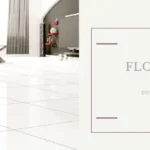A Look at the Art of Ceiling Design in Pakistan
Ceilings. Those often-overlooked expanses above our heads. They shield us from the elements, provide a canvas for lighting, and – when thoughtfully designed – can elevate an entire space. In Pakistan, ceiling design transcends mere functionality, blossoming into a vibrant art form steeped in history, cultural influences, and modern innovation. From the intricate hand-painted artistry of Mughal eras to the sleek minimalism of contemporary trends, Pakistani ceilings tell a captivating story of aesthetics and craftsmanship.
This blog delves deeper than your average ceiling discussion. We’ll explore the rich tapestry of Pakistani ceiling design, venturing beyond the readily available information. We’ll unveil the cultural influences that have shaped this art form, delve into the unique materials and techniques employed by Pakistani artisans, and uncover some lesser-known yet fascinating styles. Buckle up, design enthusiasts, as we prepare to be awestruck by the artistry that adorns Pakistani ceilings! and we are top construcion company in pakistan.
The Appeal of Tradition: A Combination of Cultural effects
Pakistan’s geographical location positions it at a crossroads of civilizations, and this is beautifully reflected in its ceiling design. The Mughal Empire, with its penchant for opulent decoration, left an undeniable mark. Take a peek at the majestic Shalamar Gardens in Lahore, where ceilings boast intricate floral and geometric patterns, often crafted from stucco or meticulously hand-painted. These designs, inspired by Islamic art and Persian motifs, were meant to evoke a sense of paradise.
Beyond Mughal influence, regional traditions also play a significant role. In Sindh, for instance, lacquered wood ceilings, adorned with vibrant mirror work, are a common sight. This style, known as Sindhi Khat, reflects the region’s rich maritime history and love for color. Meanwhile, in Khyber Pakhtunkhwa, elaborately carved wooden ceilings, often featuring geometric patterns and calligraphy, showcase the region’s skilled woodworking traditions.
What are the Most Popular Ceiling Designs in Pakistan
Pakistani ceiling design thrives on the creative use of a diverse range of materials. Here’s a glimpse into some of the most fascinating:
- Gypsum Ceiling Designs: Gypsum ceilings are a common choice in Pakistan due to their versatility and ability to create intricate designs. They are often used in traditional and modern homes alike, offering a range of options for homeowners
- Wood: A timeless material, wood offers warmth and character. From intricately carved beams in traditional houses to contemporary slatted designs, wood adds a touch of elegance. However, did you know that according to a 2019 survey by the Pakistan Furniture Council, an estimated 70% of urban households in Pakistan incorporate wooden elements in their interior design [Source: Pakistan Furniture Council Survey 2019]
- Plaster of Paris (POP) Ceilings: POP ceilings offer a modern and elegant look, often used in contemporary interior designs. Therefore, they are popular for their ability to create smooth, sleek surfaces and can be customized with various textures and patterns.
- False Ceiling Designs: False ceilings are popular for their ability to conceal wiring and provide a modern, sleek look to rooms. They can be designed with various materials, such as gypsum or POP, and can be customized with different patterns and textures.
- Traditional Motifs and Patterns: Incorporating cultural elements into ceiling designs is a popular trend in Pakistan. Homeowners often choose to include traditional motifs and patterns, such as geometric shapes or floral designs, to add a touch of local heritage to their spaces.
- Shuru: This traditional plaster, made from a combination of lime, gypsum, and other natural ingredients, is a versatile choice. Artisans mold it into intricate patterns and often embellish it with paint or even gold leaf.
- Metal: From gleaming copper to hand-beaten brass, metal adds a touch of sophistication and reflects light beautifully. Perforated metal sheets, a technique allowing for intricate patterns, are becoming increasingly popular.
- Textiles: Yes, you read that right! Fabrics like silk and brocade, often embellished with embroidery or traditional mirror work, add a touch of luxury and cultural flair. This is particularly prominent in historic haveli mansions, where these textile ceilings create a truly opulent atmosphere.
Lesser-Known Styles Of Ceilings
While the beauty of Mughal-inspired and regional styles is undeniable, Pakistani ceiling design offers a surprising variety. Let’s explore some lesser-known yet captivating options:
- Jaali Ceilings: These intricate latticework ceilings, often crafted from wood or stone, are a marvel of craftsmanship. They not only add a decorative touch but also promote air circulation, particularly beneficial in Pakistan’s hot climate.
- Ethnic Murals: Imagine a ceiling adorned with a vibrant depiction of a truck art motif or a traditional Balochi embroidery pattern. Ethnic murals, hand-painted or crafted using fabric panels, are a stunning way to celebrate Pakistani heritage within your home.
- Exposed Brick: Industrial chic meets rustic charm in exposed brick ceilings. This contemporary trend adds a raw, textured feel to a space and is often paired with modern lighting fixtures for a striking contrast.

The Future of Pakistani Ceiling Design
Pakistani ceiling design is constantly evolving, embracing modern materials and techniques while staying true to its rich heritage. Here’s a peek into what the future holds:
- Sustainable Materials: Eco-conscious homeowners are increasingly opting for sustainable materials like bamboo or recycled wood for their ceilings.
- Integration of Technology: Imagine a ceiling that seamlessly integrates lighting, ventilation, and even audio systems. With advancements in technology, such smart ceilings are likely to become more prevalent.
- Fusion Styles: The future promises a delightful blend of traditional and contemporary aesthetics. Expect to see Mughal motifs reinterpreted in modern materials or regional styles incorporated into minimalist designs.
Conclusion: More Than Just a Ceiling
In Pakistan, ceiling design is more than just a finishing touch. So, It’s a way to showcase cultural heritage, create a comfortable living environment, and express personal style. So, the next time you look up in your Pakistani home, take a moment to just




